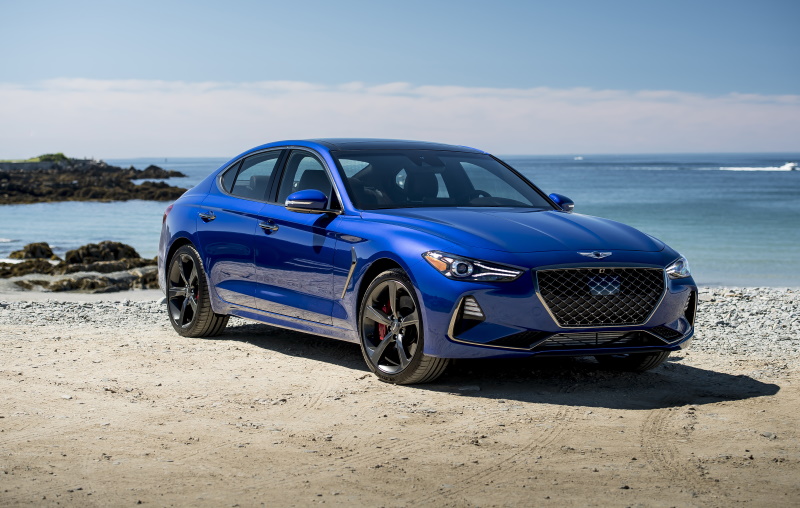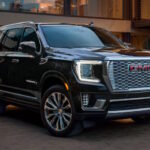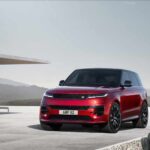Badge snobbery. The force is strong with badge snobbery. If you want a luxury vehicle, you may completely skip over certain brands to get a higher-end car. The culprits of these are mainly German with Audi, BMW, and Mercedes-Benz. Don’t get me wrong, they all do make luxurious vehicles. All three of these brands make a vehicle for any occasion. If you want one of these, the entry point is around $35,000 and if you can buy one, go ahead and get one.
There are a couple of problems with German brand snobbery. First, many good brands are overlooked and that can leave out some potentially good and competitive vehicles. Second, different countries and different brands do things… differently. A Japanese luxury SUV may appeal to a different consumer than an American one. The biggest problem I can is the price. As I said, the entry for German automobiles is around $35,000, without any options. The vehicles I’ll be looking at start at least $10,000 less before options. Let’s look at a few segments and brands where premium non-German vehicles come in.
The newest member of the luxury brands is Genesis. At first, Hyundai took it’s Equus and Genesis vehicles and renamed them G90 for the Equus and G80 for the Genesis sedan. Since they were primarily the same vehicles as their old names, people didn’t care about them or about Genesis as a whole. Then the compact G70 came in and took the world by force. The engine of choice is the 3.3 turbocharged V6 producing 365-horsepower and 376 lb-ft. An eight-speed automatic along with either rear or all-wheel-drive gets the G70 to 60 MPH in around 4.5 seconds. This is better than any non-German compact sedan and has the handling to compete with anyone.
Along with the powerful engine, the G70 has a great interior. It’s very comfortable, filled to the brim with tech, and has some comfortable seats. Speaking of the seats, they come standard heated and ventilated. You also get as standard a sunroof and navigation system. The package I would choose is the Prestige package. This comes with a heads-up display, Nappa leather, heated rear seats, and heated steering wheel. My complaints about the G70 are small. The exterior styling is bland and a little anonymous. Also, the infotainment system looks cheap compared to the rest of the car. Those aside, I would gladly pay $50,000 for a loaded G70. If you think that’s expensive, a similarly-specced Audi S4 or Mercedes-AMG C43 is about $10,000 more.
Leaving Korea, we go to Sweden where we find Volvo. In the past few years, Volvo has done some good and questionable things. For the good, their vehicles are beautiful. Starting with the XC90, their design language with the Thor’s Hammer headlights make these all attractive. The entire lineup is designated with variations of the same 2.0-liter I4. They can be turbocharged, turbocharged and supercharged, or a plug-in turbocharged and supercharged. The vehicle from Volvo we will look at is the S90 T6 Inscription.
The S90 is the largest sedan that Volvo makes, yet it is still a midsize sedan. Like I said before, it’s a handsome vehicle. I would dare say it’s even more handsome than a Mercedes-Benz E-Class. The T6 means the engine of choice is a turbo and supercharged 2.0-liter I4 creating 316-horsepower and 295 lb-ft. AWD is standard and the 8-speed automatic gets the S90 to 60 MPH in a respectable 5.9 seconds. If the Genesis is more about being a sports car, the S90 is a cruiser. Get the Inscription and you get heated and ventilated Nappa seats, a 12.3” drivers display, full safety suite, and Sensus navigation. A few options such as massaging seats, heated and ventilated rear seats, and a heads-up display will get you to around $60,000. Once again, the Germans are about $10,000 more.
Before 2018, the only interesting vehicle in Acura’s line-up was the NSX. This was for good reason, and most of their vehicles were getting a little old or couldn’t compete with others. 2019 comes around, and there seems to be a spark in Acura. Their RDX has gone through some weird transformations. First, it was a turbocharged I4. The next generation saw it as a V6. Now, it’s back to a turbocharged I4, producing 272-horsepower and 280 lb-ft. 10-speeds and Super-Handling AWD get the RDX to 60 MPH in 5.2 seconds. Thankfully, it is way better looking than its predecessor. The new RDX looks more aggressive with the large headlights and grille. The A-Spec styling package really ups the “wow” appeal 20” gray wheels, different bumpers, Apex Blue paint, and red interior.
Base equipment includes a panoramic sunroof, heated seats, adaptive cruise control, and lane-keeping assist. Although the A-Spec looks brilliant, I would stick with the Technology and Advance Package. With these, you get a plethora of options. Technology packages include GPS-linked climate control, 2 rear USB ports, a blind-spot monitoring system, and parking sensors. Advanced packages have a heads-up display, ventilated seats, a heated steering wheel, and a surround-view camera. Since the SUV market is so saturated, the difference between a loaded RDX and a German SUV is around $5,000.
We have visited South Korea, Sweden, and Japan. Let’s land in the good ole’ US of A for our final vehicle. This vehicle is similar to the Volvo S90 where it’s more about luxury than performance. There are two vehicles over at Lincoln that I love. The Aviator and Navigator are both handsome vehicles that have excellent exteriors, interiors, and technology. When the Aviator debuted, it seemed like Lincoln hit a slam-dunk. It is an American mid-size SUV with great looks, standard rear-wheel-drive, and 400 horsepower. Although there is a plug-in hybrid, the regular 3.0-liter V6 and 10-speed automatic will get the Aviator to 60 MPH in six seconds.
Aviators have a few different trim levels, but the one I would select is the Reserve and all-wheel-drive. Standard on the Reserve includes heated front seats, quad-zone climate control, a hands-free liftgate, a 10.1” LCD display, and 360-Degree Camera. The Reserve I package includes a panoramic roof and Lincoln’s Co-Pilot360 Plus driver’s assistance package. Finally, looking at the Luxury Package gives you Lincoln’s Perfect Position 30-way seats, Revel® Ultima® 28-speaker 3D sound system. All in, this costs around $70,000. Once again, a saturated market means the Aviator is around $5,000 less than other midsize German SUVs.
It isn’t difficult to find a vehicle without a badge from Germany. Don’t get me wrong, Audi, BMW, and Mercedes-Benz all make some great vehicles. That said, it’s nice to take a look at some other luxury brands. Genesis shocked us all with their G70 sports sedan. Volvo continues with the trend of luxury, style, and safety over performance with the S90. Acura is starting to really revitalize its lineup and the RDX started the trend. Finally, Lincoln created one of the most luxurious SUVs with the Aviator. Should you not get a German car? If that’s what you want, sure. If you want something that’s less mainstream, go with the options above. Either way, you’ll be in comfort, style, safety, and power.
























